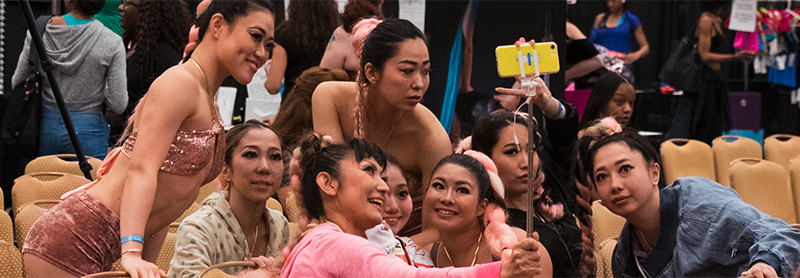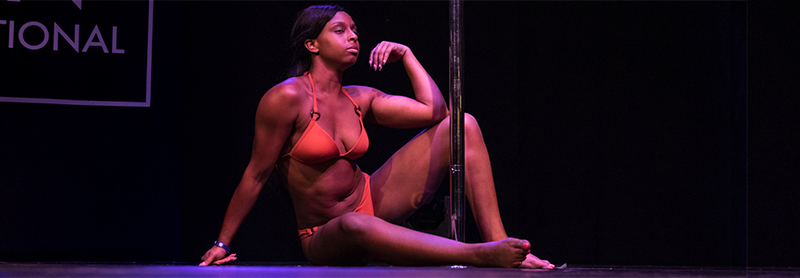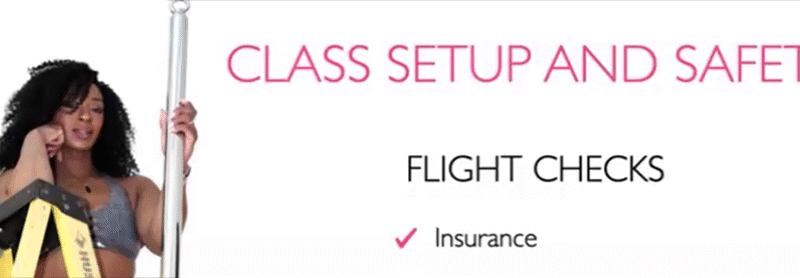Social media marketing may seem confusing and overwhelming sometimes. It is still a great way…

How many poles can fit in your space?
Are you a new studio owner? Or do you want to be? If so, you’ve probably thought of this question a lot when looking for space for your studio.
This post will cover some things to think about so you understand how many poles can fit in your space. The answer to that question translates into how many students you can serve and how much revenue you are likely to collect from your business.
How far apart should the poles be?
First, it’s important to note that there is no official distance between poles that is consistent across all studios.
Many competitions that use two poles space them about 6 feet apart. However, other competitions or competition/performance venues might have them much further apart. If your expected demographic is taller than 5-6 feet, you might want to space the poles out more, especially in cases when people stretch out completely away from the pole, such as for Iron X moves or power spins like flying bodies/reverse grabs.
For purposes of picking a general measurement, we’ll use 6 feet (or 2 meters). Use this metric for how far apart the poles should be from each other AND from the walls, columns, or other physical structures in your space that could be accidentally kicked.
How big is the space?
If you are working with commercial real estate (check out this post for more information) the owner or broker will likely know the square footage (or meters) of the space. To get the most accurate understanding of the space, make sure to bring your own measuring tape or a laser tool to measure the length, width, and height of the area you intend to install poles.
To find out the square footage, multiply the length and width of the space (a space that is 10 feet wide and 10 feet long has 100 square feet of space). If your space is not a square or a rectangle, this is going to get a bit trickier.
How many poles will fit?
When you do your final build out, you want to work with an engineer and/or architect who can confirm that the load you are expecting is appropriate for whatever structure you use to secure your poles. That person might find that you can’t use certain parts of the ceiling structurally, which may affect your final pole map and how many poles you can fit in the space.
Until then, when you are in the planning stages, you can figure this out yourself. Open PowerPoint or Google Slides and make a box that is the size of your space to create a scale drawing.
If your space is 10 feet by 20 feet, make a rectangle that is 10-inches by 20-inches to create a map that is to scale where the scale is 1 foot = 1 inch.
Now make a line that is 6 inches long.
Use that line to see where you can fit poles. The “pole” can be a small circle, like .5 inches (this isn’t to scale, it’s more like .14 for a 45 mm pole, but this is so you can see it!).
In this example (see image), you can definitely fit two poles in that 10×20-foot rectangular space using the 6-foot distance metric.

If you decreased the space to 5 feet, you could fit three poles.
Why is this important?
Once you know how many poles you can fit in your space, you can start estimating your revenue. Most studios don’t book more than 1-2 people per pole for a class.
Your math for your class revenue might look like:
Number of Poles X Number of People Per Pole X Number of Classes Per Month = Max Monthly revenue from classes.
When you are first starting, you are unlikely to get the max amount of revenue, so make sure you look at different scenarios. Calculate 50%, 25%, and 10% of maximum revenue to confirm your other expenses are in line with lower revenue and you are more prepared for difference scenarios.
Effective planning can help you understand your budget (more on budgets in this post) and see if a space is appropriate for your needs. Remember, understanding how many poles fit in your space is only one part of figuring out if a space will be appropriate for your studio needs.



